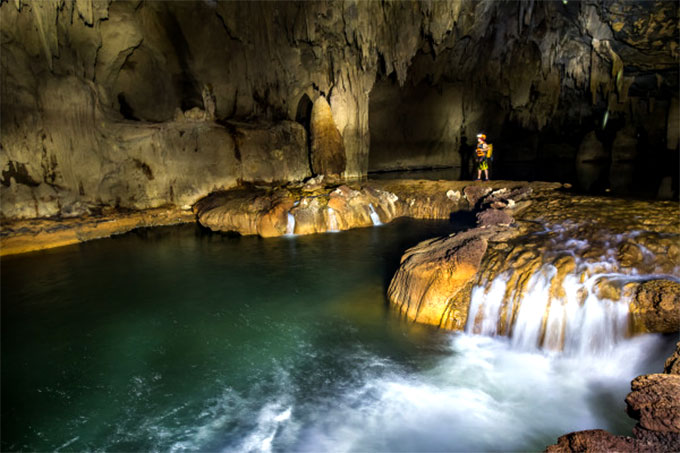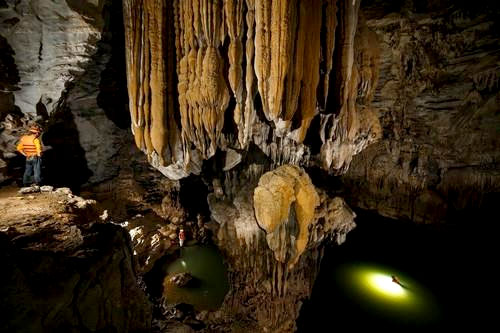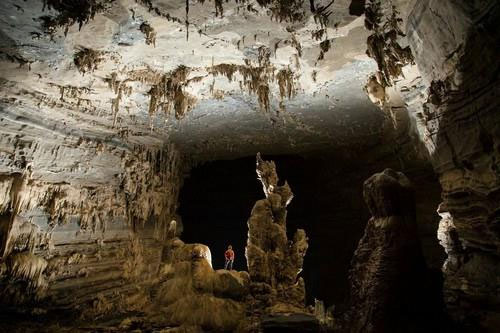A long with the other famous caves, namely Paradise Cave (Thien Duong in Vietnamese), Son Doong Cave, Tu Lan Cave System also has a contribution to attract the travelers coming to Quang Binh Province.

Tu Lan Cave System is a combination of over 10 caves in all, some of which were originally discovered and explored in 1992. Hung Ton, first found in 1992 and explored more in depth in 2012, appears first on the horizon on a trek to this intricate cave system. Its dry entrance provides an outstanding view of the valley below, and promises many more adventures inside. A ladder inside leads to the floor of the cave, and from there the journey truly begins, where one must swim through the cave to reach the exit on the other side.
The system lies 70 km away from Phong Nha - Ke Bang National Park, next to the minority village of Tan Hoa, just past the fields of grazing buffalo and rapidly growing peanut and cornfields. After the fields, it’s a splash through the river until the first ascent is reached. An ascent over the rocky slope is followed by a descent into the jungle valley below. The first cave on the horizon from there is Hung Ton cave, accessed through its dry entrance.

Explorers will have to trek through remote, untouched jungle; cross through buffalo fields; be surrounded by giant, looming, limestone mountains on all sides; and plunge into deep, cool, underground rivers that wind gracefully through mountains and river valleys alike.
The campsites are spectacular to take in, with limestone mountains breaking out of the ground on each side, and gushing waterfalls sending bubbles frothing across the surface of the water that completes the feeling of this utopian scene. Hammocks swing gently between trees, leaving you to be rocked to sleep in the light breeze, under the canopy of trees and a blanket of stars in a moonlit sky.

The stalactites and stalagmites are enormous and breathtaking. One of the caves in the Tu Lan cave system, Ken Cave, even had it’s beautiful formations featured recently in National Geographic by world renowned photographer Carsten Peter.